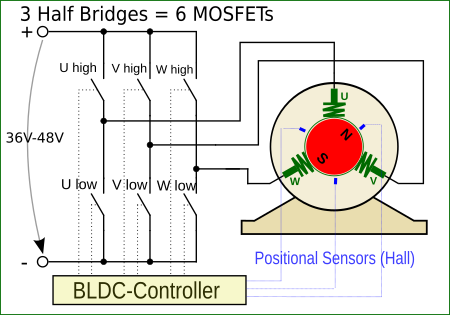The most simple form of an electric motor is a brushed DC motor where two brushes are used for power transmission and commutation. The disadvantage is the fact that the brushes burn down and need to be replaced regularly.
In a BLDC = brushless DC motor the commutation is done electronically and the motors most often have three phases which sit at an angle of 120°.
Thus a BLDC controller needs correspondingly three half bridges with two MOSFETs each. The MOSFETs are driven by a PWM to control speed an torque of the motor.
The phases are commenly named U, V and W. The MOSFETs which switch the plus side are the high side MOSFETs, In order to run current through the motor one or two high sides and one low side MOSFET are switched on.

The challenge of a BLDC controller project is the fast switching of the MOSFETs to avoid switching losses. You'll find plenty of information on Wikipedia and also here on hackaday.
Discussions
Become a Hackaday.io Member
Create an account to leave a comment. Already have an account? Log In.